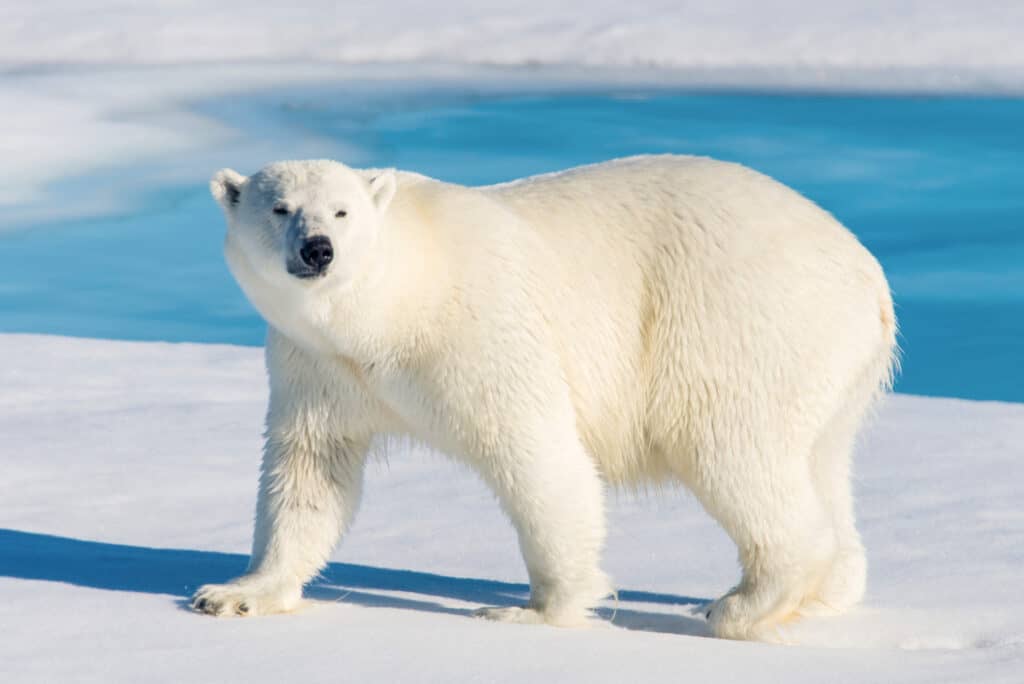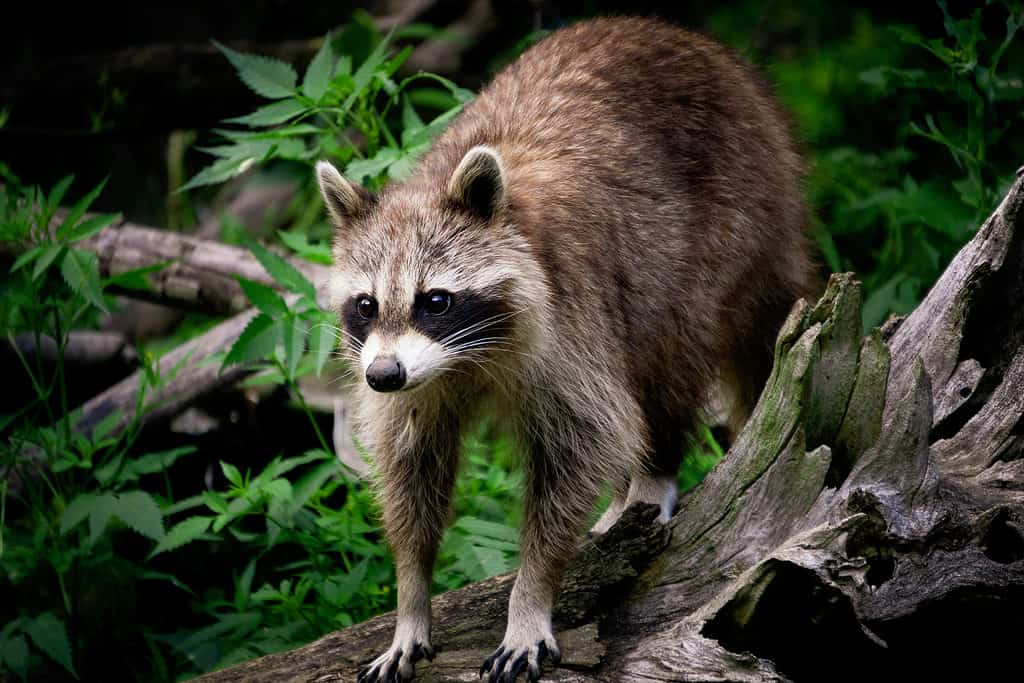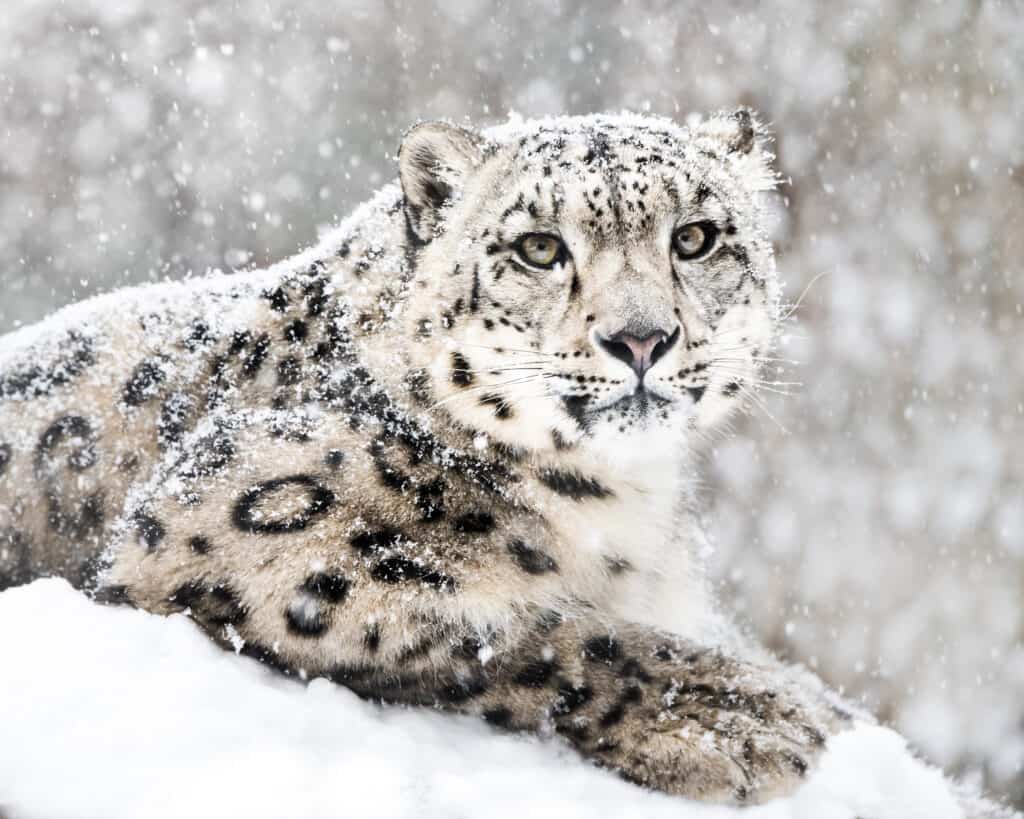Gibbons and humans have something in common.
These adorable animals are one of the only primates that are monogamous. They find a partner and stick with them for life. Other than their mate and small family unit, gibbons like to live a quiet life away from large groups. They might not be faithful to their partner, but they remain with them until death.
Do you love independent animals? Then you’ll love the creatures profiled in this article as we were. Each of them has found a way to thrive without relying on anyone else. You won’t believe some of the things they can do!
Read on to learn about some of the most incredible independent animals living and traveling alone today.
Bears

Bears are independent creatures who spend most of their lives alone.
©iStock.com/Alexey_Seafarer
Bears are independent creatures who like to live on their own. All bear species have a mostly single-species lifestyle. The exceptions are pandas and grizzly bears. They can sometimes appear together to mate or raise cubs, but often times these males will fight over food sources, so it’s best not to get too close!
Bears can travel long distances and must adapt to seasonal changes in food availability. They’ve evolved to rely on their strength and intelligence rather than relying on others for protection or assistance.
Fun fact, the original word for bear (the animal) has been lost to history! In medieval times, superstitious people thought saying the powerful animal’s name would make it appear. So instead of saying the real name, they’d say “bear.” Bear is a euphemism that means “the brown one.” The original word was never recorded, so it remains a mystery.
Raccoons

Raccoons are great opportunists and thrive independently.
©John Wherley/Shutterstock.com
Raccoons are professionals at doing things on their own. They don’t have a large herd to rely on. Instead, these nimble creatures use creative solutions to go on living. For instance, they have very dexterous front paws that allow them to open doors, untie knots, turn doorknobs, carry objects, and more.
Raccoons are omnivores and will eat almost anything they can get their hands on. They primarily feed on fruits, nuts, insects, rodents, and crayfish but also scavenge for food such as garbage or pet food. In the wild, raccoons will sometimes even eat small birds or eggs if given a chance. Raccoons are also great at adapting to new environments, like Germany.
That’s right; raccoons are not native to Germany. They came to the country in the 1920s for their highly sought-after pelts. Unfortunately, during World War II, an Allied bomb hit a raccoon farm wall and allowed a dozen independent-thinking creatures to escape. These animals are great opportunists. They can easily adapt to human environments, making it easy for them to thrive in urban areas. Now there are millions of independent raccoons thriving in Germany.
Sea Turtles
Sea turtles are an ancient independent species. They’ve been around since the time of the dinosaurs! The oldest sea turtle fossil dates back 110 million years from today. Sea turtles are also another example of animals that have evolved to live independently. There are seven species of marine turtle, all living solitary lives in the ocean depths and traveling thousands of miles each year.
All six of the sea turtle species in the U.S. have protection. This is all thanks to the Endangered Species Act. The protected species include the green, kemp’s ridley, loggerhead hawksbill, olive ridley, and leatherback.
The flatback turtle is only in Australia and Papua New Guinea. Of these turtles, the leatherback is the biggest sea turtle species. These impressive creatures can wind up weighing a ton. That means some sea turtles can weigh as much as an adult giraffe! They can also grow to be six to nine feet long.
Sea turtles use navigation skills to return to their nesting sites. They do this with remarkable accuracy despite their vast distances and the turbulent ocean currents they encounter. They may be strong and independent, but sea turtles are vulnerable to extinction.
Unfortunately, only 1 in every 1000 sea turtles born will survive to maturity. This is due to various threats, including climate change, pollution, and the over-harvesting of eggs for food or souvenirs. Those numbers pale in comparison to the Ocean Sunfish. The Ocean Sunfish may lay as many as 300 million eggs each time it spawns, and only 1 in several hundred million make it to adulthood.
Crocodiles
Crocodiles are a group of reptiles who prefer to lead solitary lives. There are some species that live in groups, but not all do. For instance, saltwater crocodiles like to live alone and are incredibly territorial. When a male encounters another of its species, it will growl and/or make loud hissing noises to ward off any competition.
Saltwater crocodiles also have an impressive natural ability to survive in the wild. They can hold their breath underwater for up to two hours while waiting patiently for unsuspecting prey.
Crocodiles hunt by ambush. They wait patiently for potential prey to come close enough before striking out quickly with their powerful jaws. With a wide range of habitats, they can thrive in freshwater rivers and lakes, saltwater estuaries, lagoons, or mangrove swamps. They are even capable of swimming long distances across oceans!
Crocodiles are apex predators that hunt on their own. They can also be scavengers when necessary. These animals rarely rely on others to get by, making them well-adapted solitary survivors. They often live in regions with limited food or resources, so it’s important they can find ways to provide for themselves.
Sloths
Slow-moving sloths lead a solitary lifestyle, spending most of their time alone in the treetops. Sloths can spend up to 15 hours a day sleeping. They forage for food efficiently by eating leaves from the canopy trees.
Up high in the treetops, sloths have adapted to their secluded lives. This is evident in their incredible ability to blend into their surroundings. Their dense fur helps them remain hidden in the tree branches. With few and far between predators, they do not need to rely on others for protection from a herd or group. They have adapted to survive in their own environment and live as lone individuals.
They don’t just climb trees, though. Sloths can swim too! Can you picture a sloth lazily swimming through the river? They use a doggy paddle to move around in the water and are surprisingly nimble swimmers. However, these proficient swimmers are currently endangered.
The smallest sloth, called the pygmy three-toed sloth, is only on a small island off the coast of Panama, where it is critically endangered. The maned three-toed sloth needs help to boost its population numbers. Thankfully, some conservation groups dedicate all of their resources to helping sloths. If you’re ever in Costa Rica, check out their sloth sanctuary. It’s educational and fun, and you’ll meet a sloth ambassador.
Moles
Moles are loners who prefer to stay in separate tunnels and only come together during the mating season. There are usually only three to five moles for every acre of land.
What do moles do with all of their free time? These solitary creatures spend their days alone hunting insects like grubs, beetle larvae, and earthworms that they find underground. Moles can eat 40 to 80 pounds of bugs a year.
Moles are small mammals with big survival skills. These mammals live underground in intricate tunnels. They dig all of the tunnels themselves using their powerful claws. Their claws are perfectly designed to create massive dirt systems that span across grasslands, forests, or even your garden!
Moles are important to local ecosystems for many reasons. They help break up hard soil and aerate the ground. By digging their burrows, moles provide a safe home for small animals like mice, lizards, and snakes who might otherwise have no shelter from their predators. Moles also act as natural pest control by eating insects that would otherwise harm crops or gardens.
All in all, moles make great neighbors! If you decide to let them live on your property, leave plenty of food sources. Leave foods like earthworms and grubs, so they can survive without having to bother you or your garden. Doing this will ensure that the moles coexist peacefully with you.
Snow Leopard

Snow leopards are rarely seen and thrive independently.
©Abeselom Zerit/Shutterstock.com
The snow leopard is a rare animal that lives in the high mountains of Asia. They have an outfit to blend into their environment perfectly. This lets these big cats hunt large prey three times their size/weight. While snow leopards prefer to go at it alone, they do form bonds to mate.
Female cats will mate briefly with males before leaving without caring for cubs. Males sometimes stay together longer. However, females don’t seem too interested at all, which isn’t surprising since these big cats generally aren’t very social in the wild.
Snow leopards become independent in childhood. They have to grow up quickly. Male and female snow leopards are ready to eat solid food by the time they are two months old. At three months old, they begin following their mother and start to learn important behavior like hunting. By 18-22 months old, cubs become independent of their mothers. Males reach sexual maturity at age four. Female snow leopards become sexually mature by age three.
The snow leopard is an iconic species that serves an important role in its environment. They help maintain balance in the ecosystem. They do this by preying on large prey such as ibex and blue sheep, which could otherwise overgraze vegetation if left unchecked. Snow leopards are also incredibly important for cultural and spiritual reasons. They’re a symbol of strength and power in many countries.
Great White Shark
Great whites are solitary hunters who prefer to hunt alone. This helps them be more efficient predators as they don’t have to split the food up or compete for it with other sharks. They can also avoid potential threats from other sharks by hunting alone and staying out of “shark territory.” Hunting alone allows them to take advantage of surprise attacks, increasing their chances of catching prey quickly and easily.
The great white shark is one of the most recognized sharks in our ocean. These giants can grow up to 20 feet long and weigh over 6000 pounds! They often hunt seals, sea lions, or whales but have been seen eating anything that they come across.
How do these independent beasts hunt? Great whites have an impressive sense of smell which can be used to locate their prey from distances as far away as two miles. Additionally, these sharks can detect a single drop of blood in 100 liters of water, making them the perfect predators.
Great whites also have an extraordinary ability to leap out of the water. Researchers call this athletic move “breaching.” Breaching involves launching their entire body out of the water with such force that it makes a huge splash as they land on top of their intended prey. This effective hunting technique allows them to catch unsuspecting prey quickly and efficiently. This shows just how powerful and intelligent these creatures are. They’re hands down one of the most fascinating independent animals on earth!
Koala
The koala is a furry creature that lives in Australia. The interesting thing about Koalas is that they can live a solitary life. They only show social interaction when with their mother or females for mating. Otherwise, these real-life teddy bears keep to themselves.
In parts of Australia, koalas are officially an endangered species. Human activity and brush fires contribute to the country’s dwindling koala population. Since 2018, Australia lost about 30% of the koala population. One of the problems is that these marsupials need a lot of food to survive.
Koalas are independent and hungry! They can eat 500 grams of leaves daily, and sometimes more. They prefer toxic eucalyptus trees. Their bodies are specially designed to break down toxins and extract nutrients. It takes a lot of work for their bodies to do this. Perhaps that’s one of the reasons they spend so much time lazing about. They’re trying to digest all that food.
Platypus
Platypuses are mainly solitary animals who spend most of their time alone or in small family groups. The platypus is a semi-aquatic animal native to Australia. It has an unusual physical appearance. These independent animals have webbed feet like ducks and paddle-shaped tails, much like beavers’.Unlike other mammals in Australia’s waterways, it lays eggs instead of giving birth.
Platypuses prefer to hunt alone. Although they may join with other platypuses for protection against predators. The solitary lifestyle helps them to avoid competition for food. It also helps them to be more efficient hunters. They can focus all their energy on finding prey without sharing it with a big group.
Silence is the key to survival for the platypus and many other independent creatures. The louder you are, the more likely it is a predator will hear. Platypuses can hide from predators much easier when alone than in a group.
Final Thoughts: Independent Animals
Living independently is not an easy task for any animal. From bears who must adapt to ever-changing food sources to sea turtles who rely on navigation skills to return home, these creatures have it figured out! They rely on their intelligence and strength rather than relying on others for protection or assistance.
Even though many animals are independent, it is important for us to remember that they still need our help. We must ensure that their habitats remain safe and protected so that these creatures can continue living wild and free lives! By understanding more about the independent lifestyles of these animals, we can learn how to better coexist with them.
Want to discover more about the animal world? Take a look at the following articles, all about animals:
Up Next
- 9 Smallest Reptiles in the World
- Meet the Biggest Horses in the World
- Amazing! 12 Types of Hybrid Animals That Actually Exist
The photo featured at the top of this post is © Volodymyr Burdiak/Shutterstock.com
Sources
- AZ Animals (1970) https://a-z-animals.com/animals/mola-mola-ocean-sunfish/ AZ Animals Staff 09/12/2022
- PBS (1970) https://www.pbs.org/wnet/nature/blog/heres-to-all-the-independent-animals-out-there/?gclid=EAIaIQobChMIqL6A0bHj-wIVgTetBh2kHQfkEAAYASAAEgLFk_D_BwE Heather Toner 06/01/2019
- National Zoo (1970) https://nationalzoo.si.edu/animals Smithsonian Natural Zoo 12/01/1/2022
Thank you for reading! Have some feedback for us? Contact the AZ Animals editorial team.






